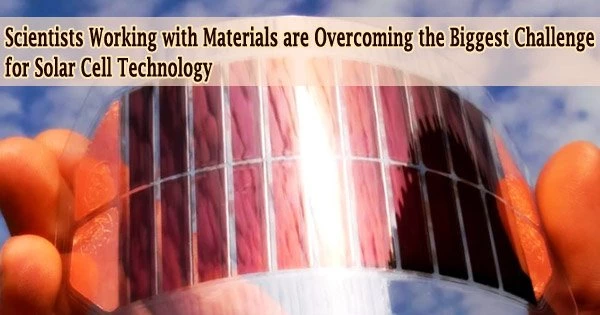Materials scientists at the UCLA Samueli School of Engineering and colleagues from five other universities around the world have uncovered the primary cause of perovskite solar cells’ degradation in sunlight, which over time causes their performance to suffer. Perovskite solar cells have shown great promise for improved energy-conversion efficiency.
The team effectively overcame the largest barrier to the wide-scale implementation of thin-film solar cell technology by demonstrating a straightforward production tweak to address the cause of the degradation.
An early access research paper describing the results was released in Nature today.
The research is led by Yang Yang, a UCLA Samueli professor of materials science and engineering and holder of the Carol and Lawrence E. Tannas, Jr., Endowed Chair. The co-first authors are Shaun Tan and Tianyi Huang, both recent UCLA Samueli Ph.D. graduates whom Yang advised.
A class of substances known as perovskites share the same atomic configuration or crystal structure as the mineral calcium titanium oxide. Metal halide perovskites, a subtype of perovskites, have attracted considerable scientific attention due to their potential usage in thin-film solar cells with high efficiency.
If the well-known degradation under extended lighting can be adequately addressed, perovskite-based solar cells might be produced at substantially lower costs than their silicon-based equivalents, making solar energy technologies more affordable.
“Perovskite-based solar cells tend to deteriorate in sunlight much faster than their silicon counterparts, so their effectiveness in converting sunlight to electricity drops over the long term,” said Yang, who is also a member of the California NanoSystems Institute at UCLA.
“However, our research shows why this happens and provides a simple fix. This represents a major breakthrough in bringing perovskite technology to commercialization and widespread adoption.”
Perovskite-based solar cells tend to deteriorate in sunlight much faster than their silicon counterparts, so their effectiveness in converting sunlight to electricity drops over the long term. However, our research shows why this happens and provides a simple fix. This represents a major breakthrough in bringing perovskite technology to commercialization and widespread adoption.
Yang Yang
Depositing a coating of organic ions that causes the surface to become excessively negatively charged is a common surface treatment used to eliminate solar cell flaws. The UCLA-led research discovered that although the treatment is meant to increase the efficiency of energy conversion while perovskite solar cells are being made, it also unintentionally produces a more electron-rich surface that could act as a trap for energy-carrying electrons.
The atoms’ regular arrangement is disrupted by this circumstance, and perovskite solar cells eventually lose their commercial appeal due to their declining efficiency over time.
By matching the positively charged ions with negatively charged ones for surface treatments, the researchers were able to address the cells’ long-term deterioration.
The switch keeps the integrity of the surface treatments for defect prevention while allowing the surface to be more stable and electron-neutral. The group put their solar cells to the test in a facility with 24/7 sunlight-like illumination and accelerated aging conditions.
Over 2,000 hours, the cells were still able to convert sunlight into electricity at an efficiency of 87%. For comparison, performance of solar cells created without the patch was tested under the same circumstances and over the same amount of time and fell to 65% of its original level.
“Our perovskite solar cells are among the most stable in efficiency reported to date,” Tan said. “At the same time, we’ve also laid new foundational knowledge, on which the community can further develop and refine our versatile technique to design even more stable perovskite solar cells.”
The other corresponding authors on the paper are Rui Wang, an assistant professor of engineering at Westlake University in Hangzhou, China; and Jin-Wook Lee, an assistant professor of engineering at Sungkyunkwan University in Suwon, South Korea. Both Wang and Lee are previous UCLA postdoctoral researchers advised by Yang.
Researchers from UC Irvine; Marmara University, Turkey; and National Yang Ming Chiao Tung University, Taiwan, also contributed to the paper. The U.S. Department of Energy’s Office of Energy Efficiency and Renewable Energy supported the research.
















